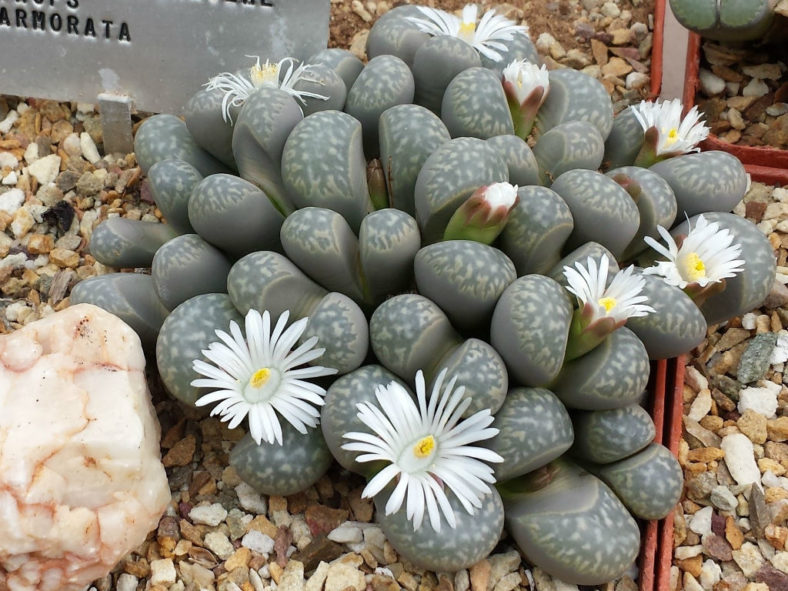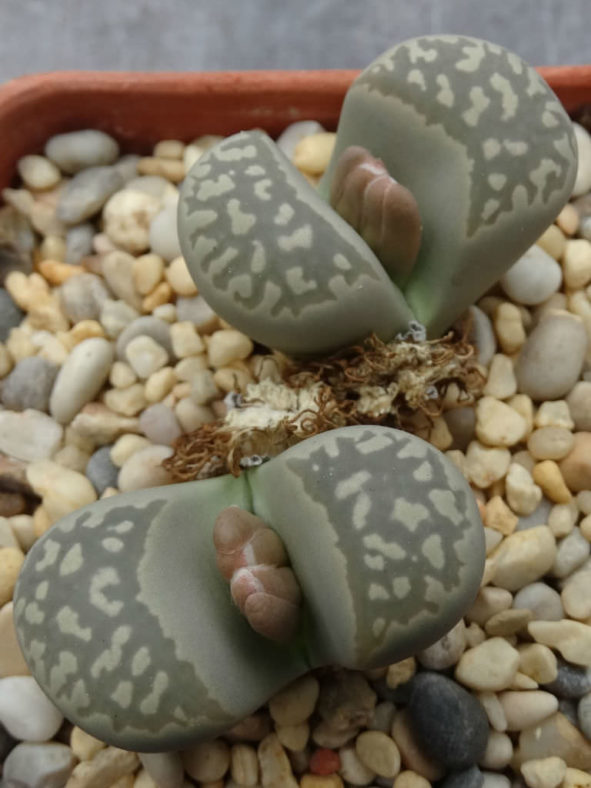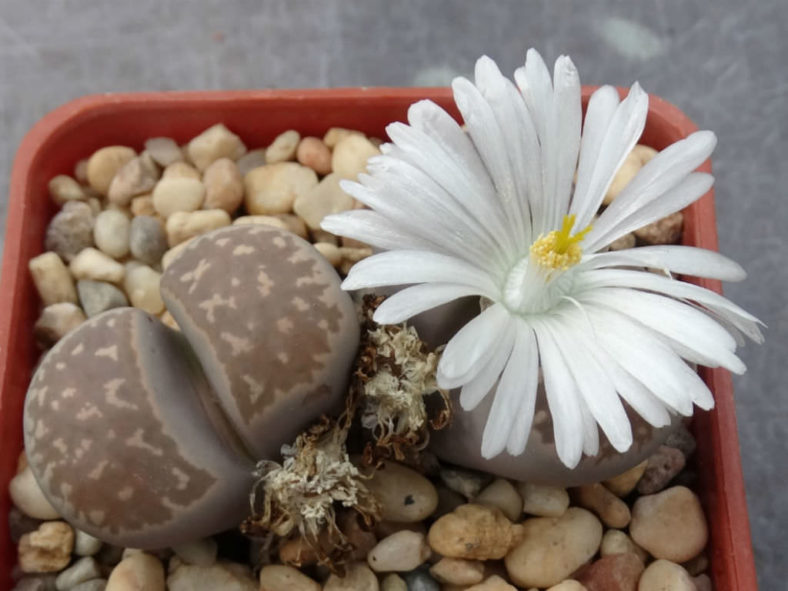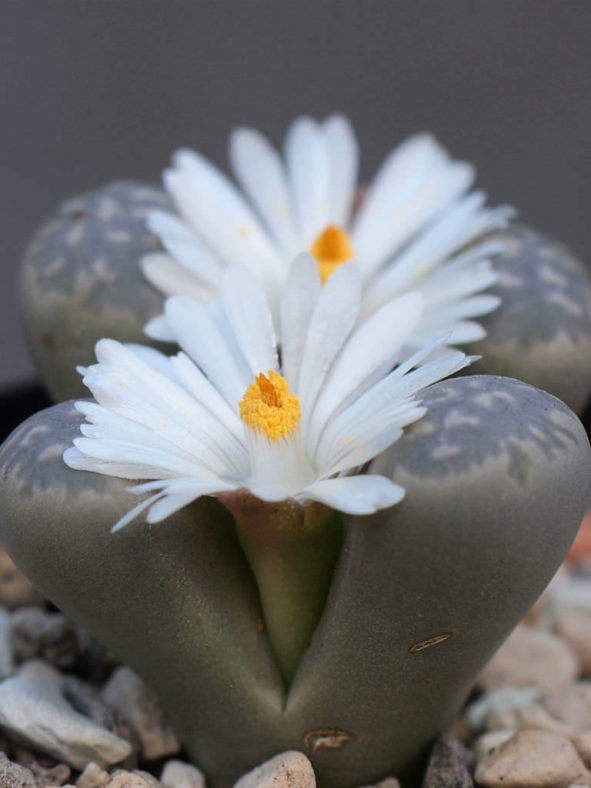Scientific Name
Lithops marmorata (N. E. Br.) N. E. Br.
Common Name(s)
Living Rocks, Living Stones, Split Rocks, Stone Plant
Synonym(s)
Lithops marmorata var. marmorata, Mesembryanthemum marmoratum
Scientific Classification
Family: Aizoaceae
Subfamily: Ruschioideae
Tribe: Ruschieae
Genus: Lithops
Etymology
The specific epithet "marmorata (mar-mor-RAY-tuh)" means "marbled, covered or encrusted with marble" and refers to the marbled pattern seen on the upper surfaces of the leaves.
Origin
Lithops marmorata is native to South Africa (Little Namaqualand, Northern Cape).
Description
Lithops marmorata is a dwarf succulent that forms clumps of many bodies that consist of two smooth, gray to pale gray-green leaves with a darker marbled pattern on the upper surface. The bodies are kidney-shaped from above and can grow up to 1.2 inches (3 cm) tall. The leaves are separated by a narrow, very deep fissure, gaping widely.
The white, daisy-like flowers appear from the fissure between the leaves from mid-summer into fall. They can reach up to 1.2 inches (3 cm) in diameter.

How to Grow and Care for Lithops marmorata
Light: A sunny windowsill where the plant receives 4 to 5 hours of direct sunlight during the early part of the day and partial shade during the afternoon is the perfect spot to grow your L. marmorata. You may place the pot on the balcony or in the garden from spring to fall.
Soil: L. marmorata thrives best in a growing medium that will drain quickly. Use a commercial soil mix for succulents, or make your own potting mix.
Hardiness: High temperatures are not a problem for this plant as long as there is plenty of fresh air, but it is not a cold-hardy succulent. L. marmorata can withstand temperatures as low as 30 to 50 °F (-1.1 to 10 °C), USDA hardiness zones 10a to 11b.
Watering: Like all Lithops, this plant has a specific yearly growth cycle, and it is important to water only during certain stages, but it is also important to keep the soil dry at other stages of its growth. How often you need to water your L. marmorata depends on how quickly the potting mix dries out. It is essential to let the soil dry out between waterings. Stop watering during the winter to allow the old leaf pair to dry out and the new pair to develop.
Fertilizing: L. marmorata does not need to be fertilized. It will thrive without any feeding. If you feed, use a high potassium and low nitrogen levels fertilizer.
Repotting: This small succulent will happily stay in the same pot for several decades. The common reason for repotting is to divide the plant or to allow space for clusters to grow. Repot only when its growing season starts.
Propagation: L. marmorata is most often grown from seeds. If you have a multi-headed plant, it can also be propagated by division. Sow the seeds during the summer.
Learn more at How to Grow and Care for Lithops.
Toxicity of Lithops marmorata
L. marmorata is non-toxic and safe to have around children and pets.
Links
- Back to genus Lithops
- Succupedia: Browse succulents by Scientific Name, Common Name, Genus, Family, USDA Hardiness Zone, Origin, or cacti by Genus
Photo Gallery
Click on a photo to see a larger version.


